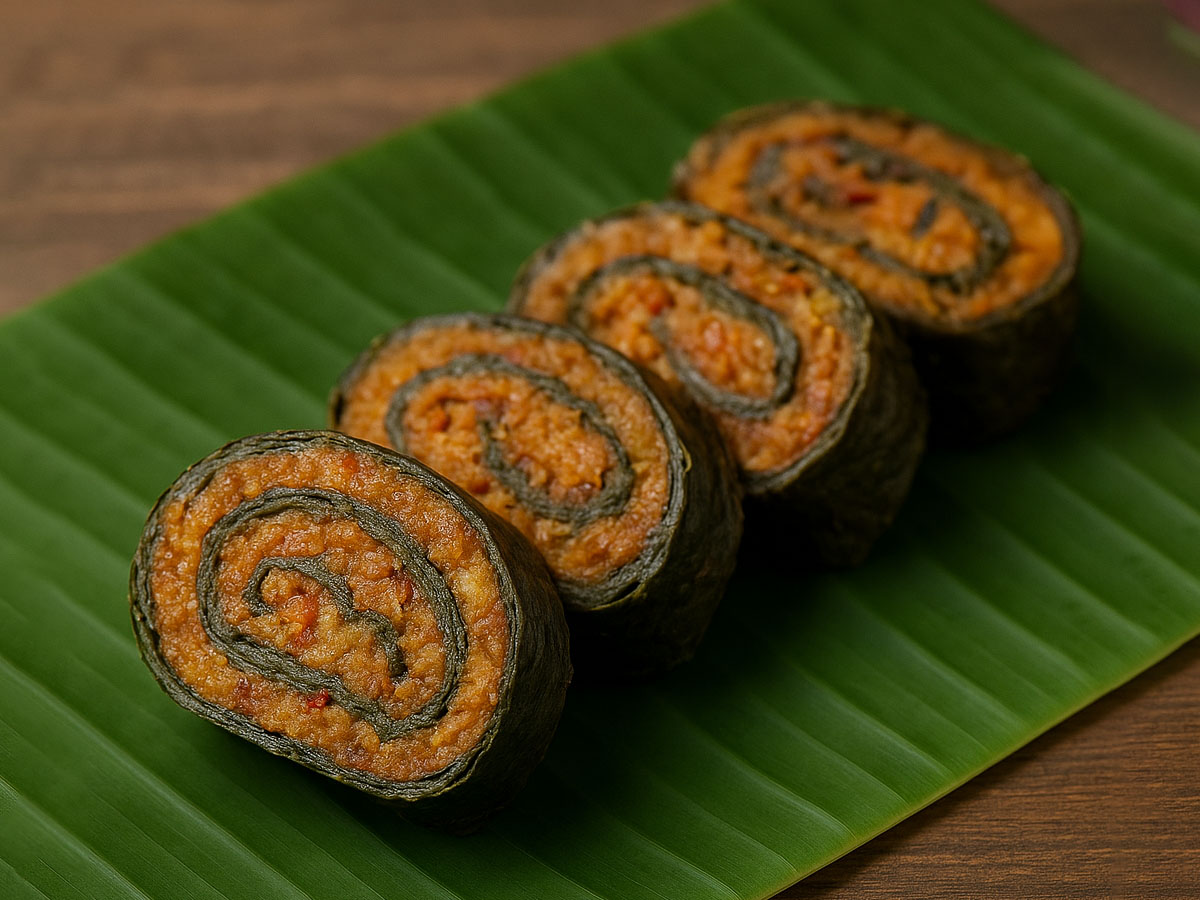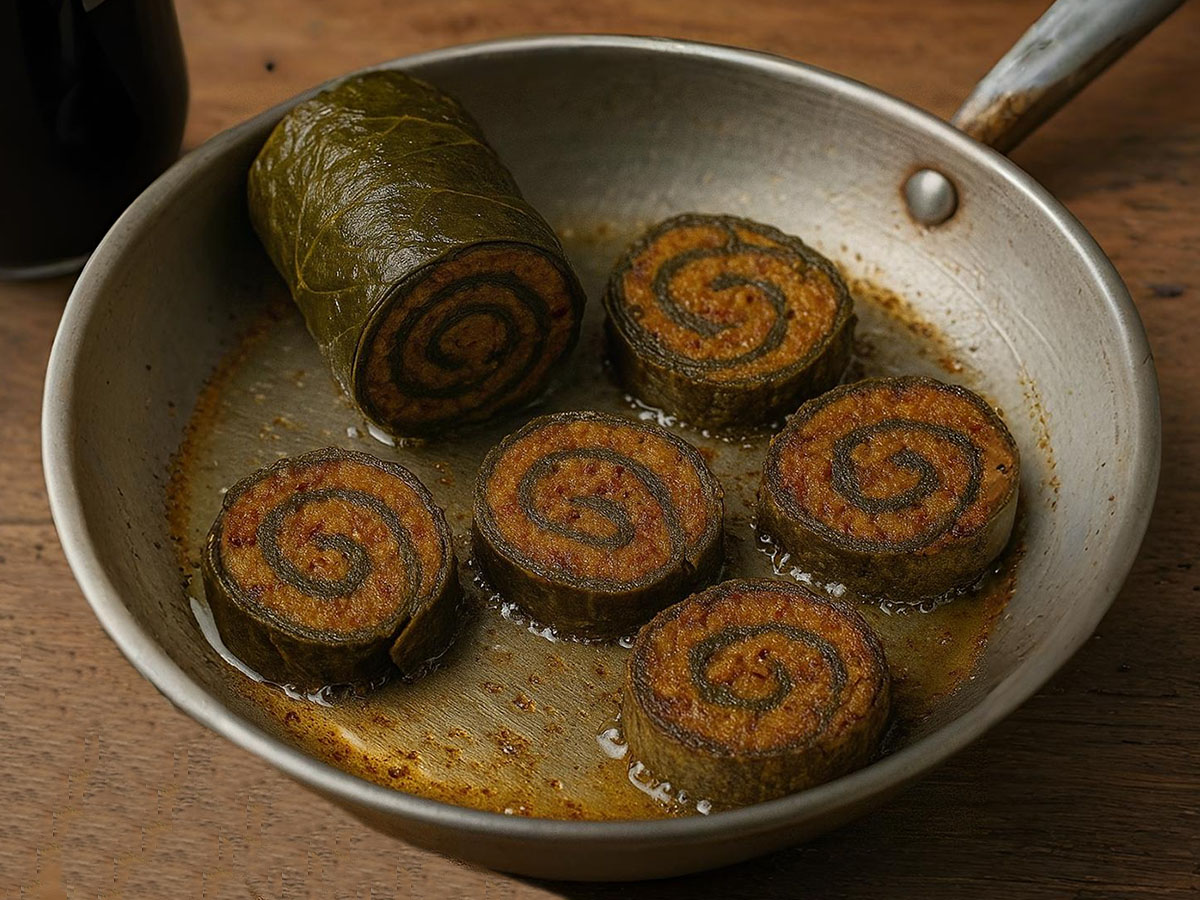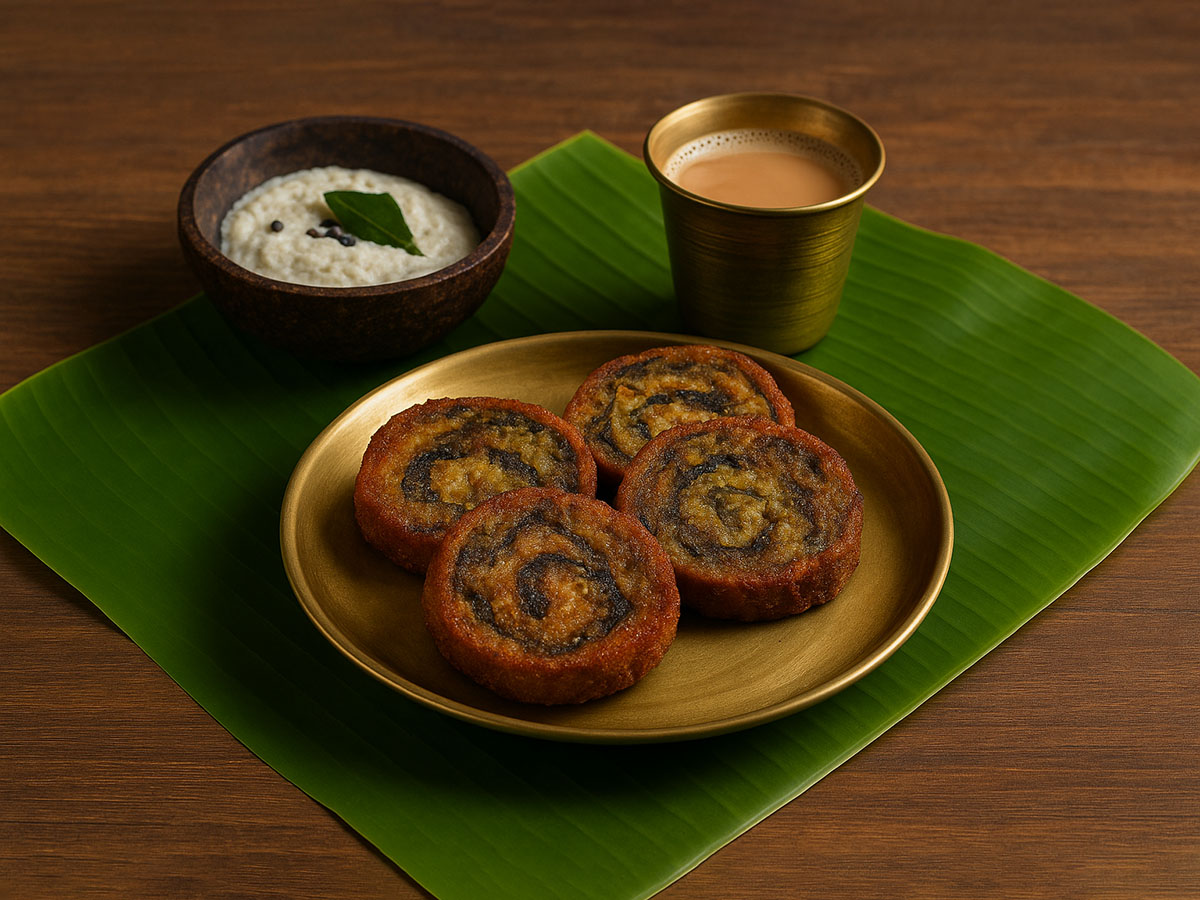If there’s one dish that beautifully blends tradition, nutrition, and flavor in Tulunadu cuisine, it’s Pathrode (also known as Pathrodo or Patra). Made using colocasia leaves (Kesavina ele) layered with a spiced rice batter, rolled, and steamed – Pathrode is both delicious and symbolic of resourceful coastal cooking.

Steamed Pathrode slices served on banana leaf – a homely and wholesome Tulunadu favorite.
Page Contents
🌱 What is Pathrode?
Pathrode is a traditional recipe from the Udupi-Mangalore region, also popular in Konkan households. It uses tender colocasia leaves and a spiced rice-urad dal batter that includes coconut, tamarind, and jaggery.
The leaves are layered with batter, tightly rolled, and steamed until firm. Some families finish the slices by shallow-frying or tempering for added crunch and flavor.
🍛 Ingredients You’ll Need
For the Batter
- 1 cup rice (soaked 3 hours)
- 2 tbsp urad dal (soaked with rice)
- 1 cup grated coconut
- 7 dried red chilies
- 2 tsp coriander seeds
- 1 tsp cumin seeds
- ¼ tsp fenugreek (methi) seeds
- ½ tsp turmeric powder
- ½ cup jaggery
- Ball-sized tamarind
- Salt to taste
For the Leaves
- 15–20 tender colocasia (taro/arbi) leaves
Optional Tempering
- 2 tbsp coconut oil
- 1 tsp mustard seeds
- 1 tsp urad dal
- 1 tsp chana dal
- 2 tbsp peanuts
- Few curry leaves
- ¼ cup fresh grated coconut
- 1 tbsp jaggery
👩🍳 How to Make Pathrode
Step 1: Soak & Prepare Batter
Soak rice and urad dal for at least 3 hours. Grind with coconut, chilies, coriander, cumin, fenugreek, turmeric, jaggery, tamarind, and salt to make a smooth, thick batter.
Step 2: Prep the Leaves
Wash colocasia leaves. Pat dry and remove thick central veins carefully without tearing the leaf.
Step 3: Layer & Roll
Lay one leaf with the smooth side down. Spread a thin layer of batter. Repeat with 4–5 stacked leaves. Fold the edges inward and roll from bottom to top into a log.
Step 4: Steam the Rolls
Place rolls in a steamer and cook for 25–30 minutes until firm. Allow to cool completely before slicing into 1 cm thick rounds.
Step 5: Pan-Fry or Temper (Optional)
For a crispy twist, shallow-fry slices in coconut oil or temper them.

Step 6: Make Tempering (Oggarane)
Heat coconut oil. Add mustard seeds, urad dal, chana dal, peanuts, and curry leaves. Add grated coconut and a bit of jaggery. Sauté for a minute.
Step 7: Toss Slices & Serve
Add steamed slices to the pan, gently toss to coat them with the tempering mixture. Serve warm.
🥥 Serving Suggestions
- Enjoy plain steamed Pathrode with a drizzle of coconut oil or ghee.
- Serve tempered or fried Pathrode as an evening snack with tea.
- Pair with coconut chutney or rasam rice for a wholesome lunch.

Fried Pathrode with coconut chutney – crispy outside, soft inside!
🪔 Cultural Significance
Pathrode is more than just a dish – it’s a seasonal tradition, especially during the monsoons when colocasia leaves are abundant. It’s also made for festivals like Ganesh Chaturthi.
This dish reflects the sustainability and ingenuity of Tulunadu and Konkan kitchens—where local ingredients and seasonal wisdom meet delicious outcomes.
💡 Tips & Variations
- Use only tender colocasia leaves to prevent itching.
- Always steam thoroughly to neutralize oxalates.
- Replace colocasia with spinach or Malabar spinach if unavailable.
- Balance spice and sweetness by adjusting jaggery and chilies.
🧳 Discover Tulunadu’s Leafy Legacy
Whether you’re nostalgic for home or exploring new regional cuisines, Pathrode is an unforgettable Tulunadu dish. It’s earthy, spicy, comforting – and a true celebration of monsoon harvests.



